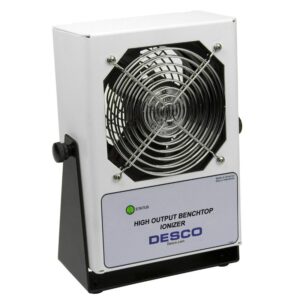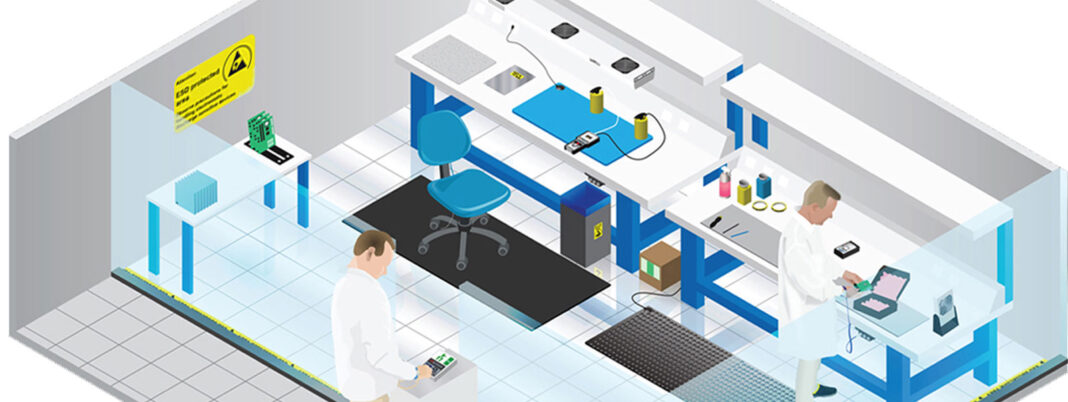Don’t Fear ESD, Help is Here
The safe zone: EPAs
Sometimes the phrase ESD Protected Area can be intimidating. But an EPA doesn’t have to be a separate room or building. It can be a designated area or even a single workstation set up to limit electrostatic charges by grounding all conductors, including people, removing all insulators (or substituting them with ESD protective versions), or neutralizing process essential insulators with an ionizer. When an ESD susceptible device needs to be removed from the ESD Protected Area it should be placed in a shielding bag or container.
Establishing an EPA doesn’t have to burdensome or expensive. You need the right tools and the right training. Equipment can be as simple as a sign to identify the ESD Protected Area (a single workstation in this case) a wrist strap, a grounded work surface mat and potentially a monitor to verify the functionality of the equipment. For processes that require operators to be mobile, a footwear/flooring system can be established to provide a path-to-ground for the operators. Once items like these are in place, it becomes a matter of using these items correctly and a verification schedule to maintain a continuous path-to-ground.
Insulators
 Process essential insulators, or insulator that can not be removed from the ESD Protected Area are a reality in most ESD Protected Areas. Examples include product housings, display screens, and test fixtures. Insulators can not be grounded and if they can not be removed or replaced with an ESD version, ionization must be used. The Desco 60505 high output benchtop ionizer, for example, will remove charges from insulators (and isolated conductors) that can not otherwise be grounded. An active balancing system continually adjusts voltage output for optimal performance and automatically alarms when maintenance is required, or the unit is not operating correctly.
Process essential insulators, or insulator that can not be removed from the ESD Protected Area are a reality in most ESD Protected Areas. Examples include product housings, display screens, and test fixtures. Insulators can not be grounded and if they can not be removed or replaced with an ESD version, ionization must be used. The Desco 60505 high output benchtop ionizer, for example, will remove charges from insulators (and isolated conductors) that can not otherwise be grounded. An active balancing system continually adjusts voltage output for optimal performance and automatically alarms when maintenance is required, or the unit is not operating correctly.
Everyone plays a part / Do your part
Operators bear a dual burden of protecting against ESD and dealing with its aftermath. Operators need sufficient training and to be vigilant in following ESD control procedures outlined in your ESD Control Plan. That starts with understanding ESD’s threats, then following established processes, and knowing how to properly use ESD control items. Employers are responsible for providing the right equipment, training and maintain the ESD Protected Area. An ESD Protected Area should have the correct markings and the ESD Control products should be regularly checked for compliance. Everyone has to do their part to ensure ESD-free workspaces.
Fortunately, there are lots of resources available to help. Make sure you’re armed with the right knowledge and resources to banish the hidden threat of ESD…for good.
Curious to find out what it takes to be the Ultimate Engineer? Check out TestEquity’s Ultimate Engineer interactive infographic



